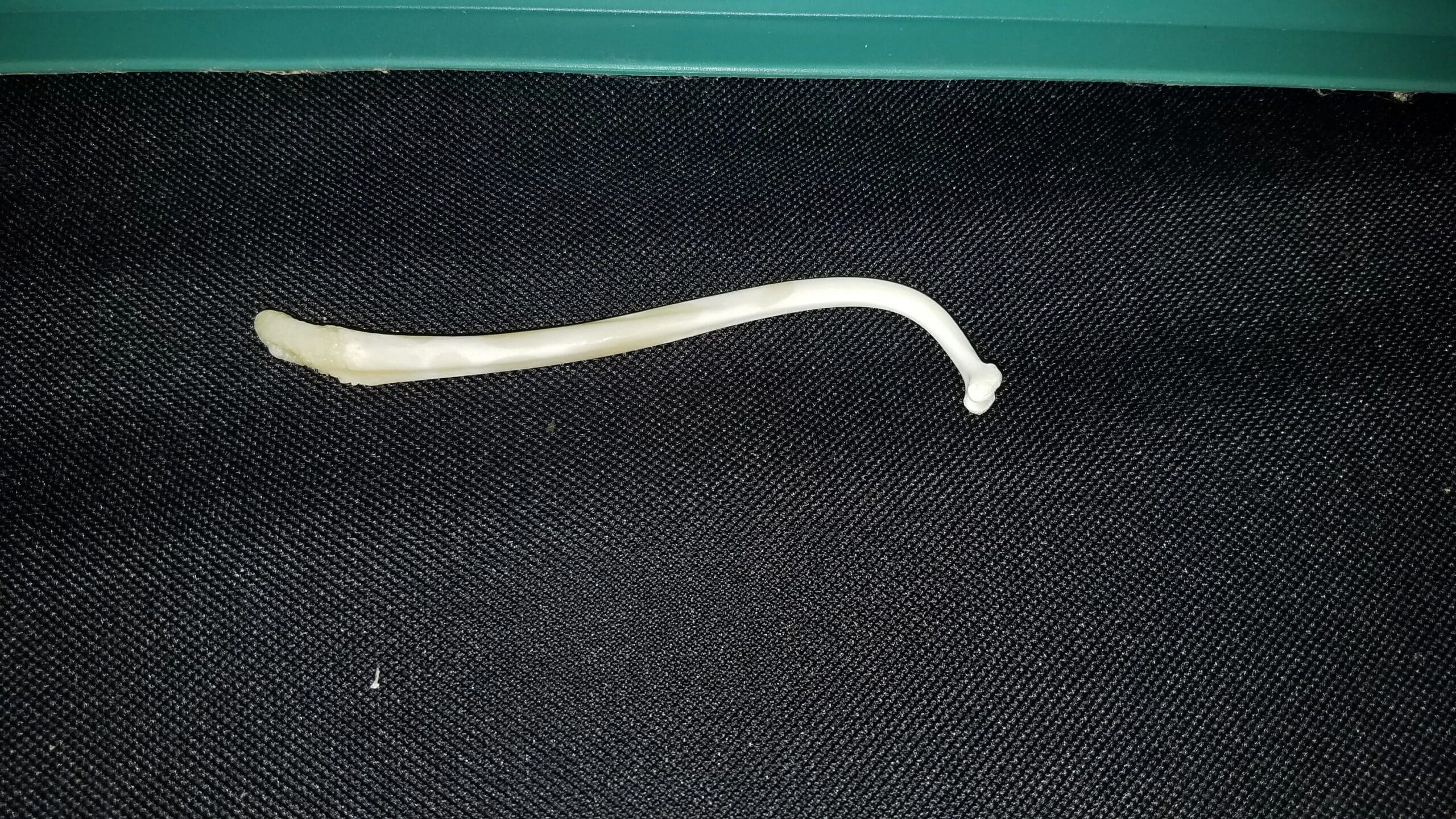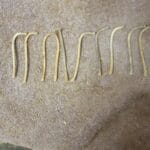Unveiling the Secrets of the Raccoon’s “Secret Bone”
Hidden within the male raccoon’s anatomy lies a curious bone known as the baculum. More than just an anatomical oddity, the baculum offers a fascinating glimpse into raccoon biology, evolution, and even folklore. Let’s delve into the captivating world of the raccoon baculum and uncover the truth behind the myths.
Myths and Legends: Separating Fact from Fiction
Tall Tales and Superstitions
The raccoon baculum has long been associated with folklore and superstition. Tales of its magical powers, from bringing good luck to possessing healing properties, have been passed down through generations. However, it is important to note that these beliefs lack scientific backing. Like the lucky rabbit’s foot, the raccoon baculum’s supposed mystical attributes remain firmly in the realm of myth.
A Window into the Past: The Baculum as an Evolutionary Clue
Tracing Evolutionary Journeys
One of the most intriguing aspects of the raccoon baculum is its ability to act as a sort of evolutionary time capsule. Scientists can trace the evolutionary lineage of raccoons and other animals by analyzing the shape and size of their bacula. This bony record helps to unravel the relationships between species and understand how their unique traits have developed over time.
The Mating Game: Size, Shape, and Competition
The Baculum’s Role in Reproduction
Ever wondered why some raccoon bacula are bigger than others? The answer might lie in the competitive world of raccoon mating. A larger baculum could potentially provide a male raccoon with an advantage when it comes to reproductive success. Additionally, different baculum shapes might be adaptations to specific environments, much like specialized tools serve particular functions.
The Case of the Missing Bone: Why Don’t Humans Have a Baculum?
A Human Oddity
Interestingly, humans are among the few primates that lack a baculum. While most of our primate cousins sport this extra bone, humans do not. Scientists have proposed several theories to explain this evolutionary quirk.
Monogamy and Its Evolutionary Influence
One theory suggests that the shift towards monogamy in human ancestors lessened the evolutionary pressure to maintain a baculum. In species where males compete fiercely for mates, a baculum might offer an advantage by enabling longer mating durations. However, as humans adopted more committed relationships, this advantage may have become less critical.
Efficiency and Alternative Adaptations
Another possibility is that humans’ relatively short copulation times reduced the need for a baculum. Species with bacula tend to have longer mating periods, suggesting the bone plays a role in prolonged intromission. Since humans do not engage in extended mating sessions, the baculum may have become less essential.
A Trade-Off for Larger Size?
Intriguingly, some researchers propose that the loss of the baculum in humans may have paved the way for the evolution of larger penises. Without the need for a bone to provide rigidity, the human penis might have been freer to evolve in size, potentially offering an advantage in sexual selection.
Respecting Nature’s Limits: Ethical Considerations in Baculum Study
Conservation and Ethical Collection
While the raccoon baculum offers valuable scientific insights, it’s crucial to emphasize ethical considerations in its study. Researchers must ensure that bacula are collected responsibly, primarily from raccoons that have died from natural causes or through ethical research practices. Protecting animal populations and minimizing harm should always be a top priority.
Balancing Curiosity with Conservation
Over-collecting bacula could negatively impact raccoon populations and disrupt their crucial role in the ecosystem. Finding a balance between scientific inquiry and environmental responsibility is essential for preserving the natural world while expanding our knowledge.
Beyond the Bone: Unraveling the Mysteries of the Raccoon Baculum
What We Know and What We Still Don’t
The raccoon baculum, though small, sparks big questions about evolution, animal behavior, and our place in the natural world. While we’ve learned much about this curious bone, there are still mysteries to unravel. By approaching research with respect and a commitment to conservation, we can continue to unlock the secrets held within this tiny piece of raccoon anatomy.
What is a Raccoon Baculum?
Demystifying the Raccoon Baculum: A Closer Look at the “Penis Bone”
You might have heard whispers of a “mystical raccoon bone” and wondered about its significance. While not imbued with supernatural powers, the raccoon baculum, more commonly known as the “penis bone,” is undoubtedly a fascinating anatomical feature. Let’s shed light on the real story behind this curious bone found within male raccoons.
More Than Just a Bone: The Baculum’s Role in Reproduction
Unlike humans, male raccoons possess this extra bone, the baculum, inside their penises. While it might seem strange, this bony structure plays a crucial role in their reproductive success, supporting the penis during mating and facilitating prolonged copulation.
From Juvenile to Adult: The Baculum’s Transformation
The raccoon baculum actually changes as they age, offering a unique insight into their development. Young raccoons have smaller, lighter bacula with a soft, cartilaginous tip. As they mature into adults, their bacula grow larger, heavier, and become fully ossified (transformed into bone).
A Built-in Age Indicator
What’s truly remarkable is that the size of a raccoon’s baculum directly correlates with its age. The weight and length provide a reliable indicator of a raccoon’s age, making it an invaluable tool for wildlife biologists studying raccoon populations. This natural age marker helps researchers understand population dynamics and develop effective conservation strategies.
Beyond the Biology: The Baculum’s Cultural Significance
Over time, the raccoon baculum has found its way into human culture, inspiring folklore, myths, and even traditional practices. From being perceived as a good luck charm to holding a place in folk magic traditions, the baculum’s presence extends beyond the realm of biology, reflecting our complex relationship with the natural world.
Ethical Considerations: Balancing Curiosity and Conservation
As we explore the fascinating world of the raccoon baculum, it’s paramount to prioritize ethical considerations. Researchers must ensure that any study or collection of bacula adheres to strict ethical guidelines, minimizing harm to raccoon populations and their natural habitats. Conservation efforts rely on responsible scientific practices that prioritize the well-being of wildlife.
The Ongoing Quest for Knowledge
While we’ve uncovered much about the raccoon baculum, there’s still so much more to learn. This little bone, with its role in reproduction, its evolutionary significance, and its cultural resonance, continues to captivate scientists and nature enthusiasts alike. As we delve deeper, we gain a greater appreciation for the intricate workings of the natural world and the importance of preserving it for future generations.
Why Did Humans Lose the Baculum?
Unveiling the Mystery of the Missing Bone: Exploring the Evolutionary Journey of the Human Penis
The baculum, that curious bone found in the penis of many mammals, is a testament to the diversity of life on Earth. Yet, humans stand out as an anomaly, lacking this particular skeletal feature. The question that has puzzled scientists and fascinated curious minds alike is: why did humans lose the baculum? Join us as we delve into the intriguing theories surrounding the disappearance of the human penis bone.
A Look at the Evolutionary Landscape: The Baculum’s Presence and Absence
Before we explore the “why,” it’s essential to understand the “what” and “where.” The baculum is present in many placental mammals, from primates like gorillas and chimpanzees to rodents, carnivores, and even some insectivores. However, it’s notably absent in monotremes (egg-laying mammals), marsupials (pouch-bearing mammals), and of course, humans. This patchy distribution across the mammalian family tree is part of what makes the baculum such an intriguing subject of study.
The Rise of Monogamy: A Shift in Evolutionary Pressures
One prevailing theory points to the evolution of monogamy in humans as a potential driver for baculum loss. In species where males face intense competition for mates, a baculum might offer a reproductive advantage by enabling longer mating durations. This prolonged intromission could increase the chances of successful fertilization, especially in multi-male mating systems.
As our human ancestors transitioned towards more monogamous or serially monogamous relationships, the selective pressure to maintain a baculum may have decreased. With reduced male-male competition, the need for prolonged copulation may have become less critical for reproductive success. In essence, as humans adopted different mating strategies, the baculum might have become less evolutionarily advantageous, eventually leading to its disappearance.
People’s Statement: “After the human lineage split from chimpanzees and bonobos and our mating system shifted towards monogamy, probably after 2 million years, the evolutionary pressures retaining the baculum,” says Dr. Kit Opie, who researches the evolution of the baculum.
Short and Sweet: The Impact of Copulation Duration
The length of copulation, or intromission duration, also plays a role in this evolutionary mystery. Humans, compared to some other primates, have relatively short copulation times. Interestingly, the baculum is more prevalent in species known for their lengthy mating sessions. This correlation suggests that the bone might play a role in supporting the penis during extended intromission.
If shorter copulation times became the norm for our human ancestors, the baculum’s function might have become less crucial, leading to its gradual decline. Without the need to maintain prolonged penetration, the evolutionary pressures that once favored a baculum would have diminished, allowing for its eventual loss.
Size Matters: Did the Baculum’s Loss Fuel Penis Size?
This theory might raise a few eyebrows, but some scientists propose a fascinating link between the loss of the baculum and the evolution of larger penises in humans. Without the need for a bone to provide rigidity, the human penis might have been freer to evolve in size. This, in turn, could have offered a selective advantage in sexual selection.
While it’s difficult to prove definitively, the idea that the baculum’s absence allowed for other anatomical developments is an intriguing piece of the puzzle. It highlights the complex interplay between evolution, anatomy, and sexual selection that has shaped the human species over millennia.
Beyond Anatomy: Exploring the Cultural Implications
The absence of a baculum in humans hasn’t just shaped our physical evolution; it has also influenced our cultural perceptions. Throughout history, the concept of masculinity has often been intertwined with ideas of sexual prowess and virility. The lack of a baculum, a feature present in many other mammals, might have contributed to societal anxieties and cultural constructs surrounding male sexuality.
The Ongoing Quest: Unraveling the Complex History of Human Sexuality
The question of why humans lost the baculum remains a subject of ongoing scientific inquiry. The theories proposed so far offer compelling explanations, but the definitive answer remains elusive. What is clear is that the baculum, or lack thereof, provides a fascinating window into the complex interplay of evolution, anatomy, and behavior that has shaped our species. As we continue to explore our evolutionary past, we gain a deeper understanding of what makes us uniquely human.
Which Animal Has the Biggest Baculum?
A Whale of a Bone: Exploring the Surprising World of Animal Penis Bones
The animal kingdom never ceases to amaze, and when it comes to the baculum, or penis bone, size definitely matters. Forget tusks and antlers; the title for the most impressive baculum goes to the walrus. This Arctic giant boasts a penis bone that can reach a staggering meter in length – that’s longer than a yardstick! Join us as we dive into the fascinating world of bacula, exploring their evolutionary significance and the reasons behind their incredible size variations.
Baculum 101: Understanding the Basics
Before we reveal the champion of baculum size, let’s lay some groundwork. The baculum is a bone found within the penis of many placental mammals, but notably absent in monotremes, marsupials, and humans. Its function has been a topic of much debate among scientists, but it’s generally believed to play a role in copulation and sexual selection.
The Walrus’s Mammoth Baculum: An Evolutionary Marvel
Now, back to the walrus. Its massive baculum, averaging around 60 centimeters (2 feet) but potentially reaching up to 1 meter (3.3 feet), has left scientists puzzled and intrigued. Several theories attempt to explain this extreme size:
Underwater Love: Walruses mate in the frigid waters of the Arctic, a challenging environment for any romantic encounter. Their large baculum may provide the necessary rigidity and support for successful copulation in these turbulent conditions.
Prolonged Pleasure: The walrus’s impressive baculum might also contribute to extended mating sessions. Longer copulation times can be advantageous in species with multi-partner mating systems, as it increases the chances of a male’s sperm fertilizing the female’s egg.
Show of Force: In the animal kingdom, size often equates to dominance and sexual prowess. A large baculum could serve as a visual signal of a male walrus’s virility, attracting potential mates and intimidating rivals.
Beyond the Walrus: The Diversity of Bacula
While the walrus reigns supreme in terms of sheer size, the animal kingdom boasts a remarkable diversity of bacula. They come in all shapes and sizes, from the short and stout to the long and slender, reflecting the incredible variety of evolutionary adaptations.
Shape Shifters: The shape of a baculum can vary dramatically across species. Some are straight, while others are curved or even forked. These variations likely reflect adaptations to specific female reproductive tracts, ensuring successful copulation.
Size Matters, But So Does Shape: While size is often emphasized, the shape of a baculum can be equally important for its function. Intricate grooves, ridges, and curves may play a role in stimulating the female reproductive tract or removing competitor’s sperm.
Unlocking the Secrets of Baculum Evolution: An Ongoing Quest
The study of bacula offers a unique glimpse into the complexities of animal reproduction and evolution. The incredible size variations and diverse shapes observed across species highlight the power of natural selection in shaping even the most intimate aspects of an animal’s biology. While we continue to unravel the mysteries surrounding the baculum, one thing is certain: this curious bone will continue to fascinate and inspire scientific inquiry for years to come.
- Discover Trasa Robertson Cobern’s Mentors: Shaping Her Hurst Campaign - July 9, 2025
- Discover People Influenced by Trasa Cobern: A Legacy of Service - July 9, 2025
- Discover Trasa Cobern’s Nonprofit Impact: A Deep Dive - July 7, 2025

















1 thought on “Raccoon Baculum: Myths, Facts, and the Intriguing Story of the Penis Bone”
Comments are closed.